Donatellos Statue of David Is Important in the History of Culture and the Arts Because

Donatello, "David," statuary sculpture, c. 1440 (Photograph: Patrick A. Rodgers via Wikimedia Commons [CC Past-SA ii.0])
Donatello'due south David was incredibly innovative when information technology was produced, as it was the commencement known free-standing nude statue created since artifact and the first unsupported standing piece of work in bronze that was cast during the Renaissance.
Although slightly overshadowed past Michelangelo's work now, Donatello's bronze statue remains his most acclaimed piece which stands apart for its unique portrayal of the biblical hero.
Who is Donatello?

Portrait of Donatello, c. 1500s (Photo: sailko via Wikimedia Commons [CC BY-SA 3.0, CC By 2.5])
According to the art historian Giorgio Vasari, Donatello traveled to Rome with his colleague, Brunelleschi (1377-1446). There, the two artists studied classical sculpture from Ancient Rome and Greece, and it proved formational in Donatello'south approach to fine art. As he connected working, he became one of the leading figures in the early Renaissance to push for a return to classical aesthetics, which included an accent on anatomical realism, three-dimensionality, and perspective.
Around the year 1430—when Donatello was at the peak of his fame—he found a patron in Cosimo de' Medici (1389-1464), the head of the nearly influential family of Florence. It was under him that the sculptor produced his masterpiece, David.
The Story of David and Goliath
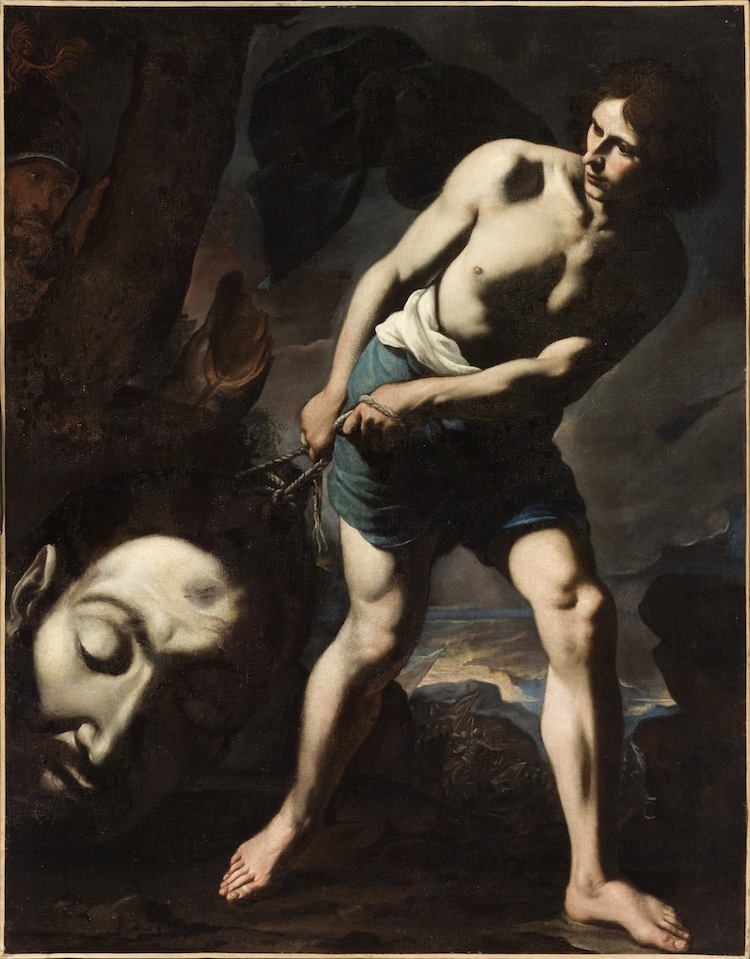
Andrea Vaccaro, "David With the Head of Goliath," c. 1634 (Photo: Wikimedia Commons [Public Domain])
David, as a immature shepherd boy who won through God-derived strength and backbone, became a pop character in Renaissance fine art. Artists like Donatello, Michelangelo, and Bernini each portrayed David equally the standard of youthful masculine beauty reflective of their time periods.
Donatello's David Sculpture
Marble
Years before Donatello approached the bronze David, he endeavored the aforementioned subject field in marble. This sculpture was commissioned in 1408 and was intended to be placed on superlative of i of the buttresses of the Florence Cathedral. It ultimately found its home in the Palazzo della Signoria.
Donatello'south marble David is considered to be his first major work and displays the artist's transition from the gothic fashion—which was still largely present in Italy—to more classical representation. Although David demonstrates a want for realism in his contrapposto stance, he as well lacks any emotional narrative in his expression, appearing more like the enigmatic and svelte figures from Gothic fine art.
Bronze
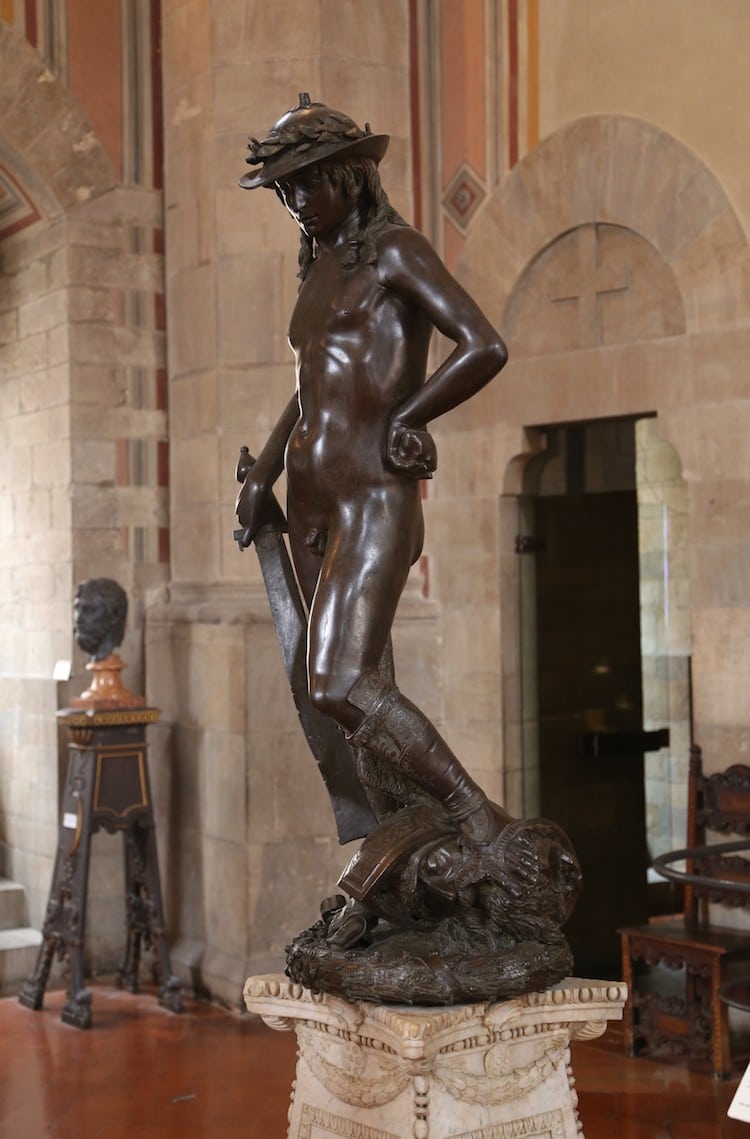
"David," bronze sculpture, c. 1440 (Photograph: Rufus46 via Wikimedia Commons [CC BY-SA iii.0])
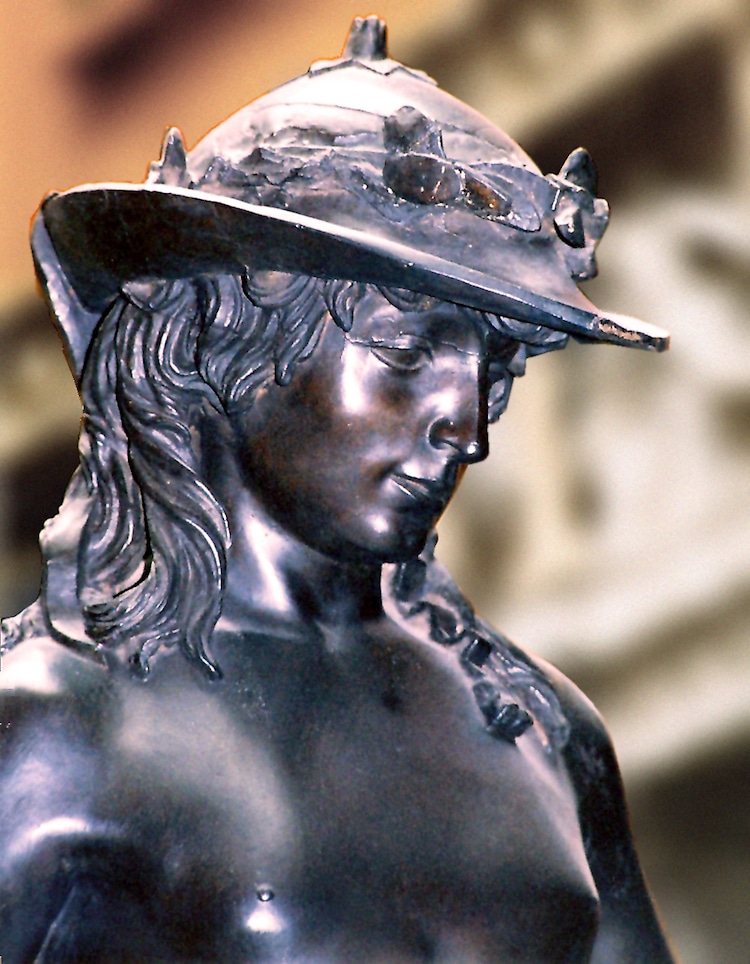
Detail of a painted plaster replica of Donatello's bronze "David" (Photo: Lee M via Wikimedia Commons [CC BY-SA 3.0])
The sculpture depicts the boy every bit the paradigm of youth and beauty. His features, for example, are frail and refined and framed by shoulder-length curls of hair. David languidly smiles, looking completely at ease in his contrapposto stance. This emphasis on his age and looks symbolically infers his goodness and shows that he won non through physical strength, just through God.
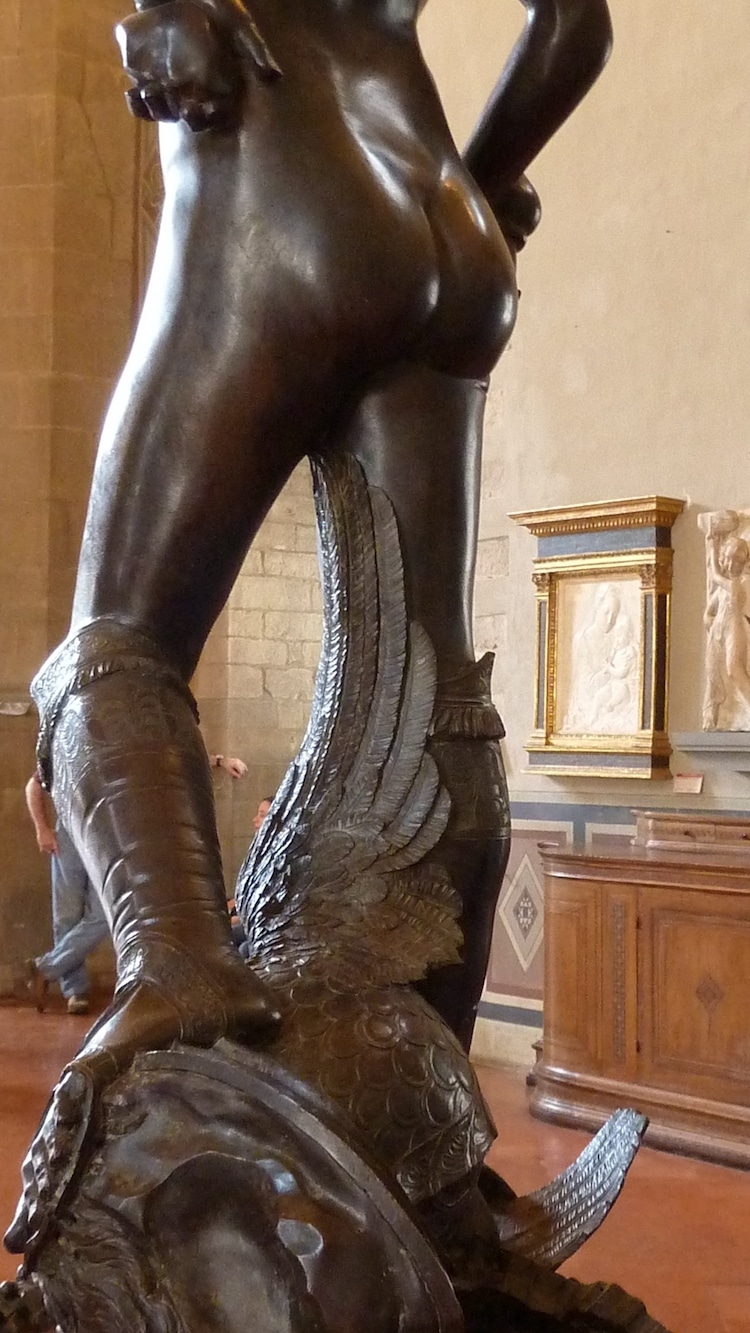
Detail of "David," statuary sculpture, c. 1440 (Photo: David's Patoot via Wikimedia Commons [CC BY-SA iii.0])
The Legacy of Donatello
Donatello's classical approach to sculpture greatly influenced the direction of Renaissance art during quattrocento—a term that describes the artistic and cultural events of the 1400s. He, along with contemporaries similar Brunelleschi and Ghiberti, turned abroad from the fading Gothic style in favor of a more than realistic, humanist approach to art.
The artist'south emphasis on anatomical realism and perspective, besides as his innovations in the field of sculpture, had a lasting influence on the Renaissance artists that emerged decades afterwards his decease. In The Lives of the Artists, the historian Vasari said about Donatello: "He may be said to have been the first to illustrate the art of sculpture among the moderns."
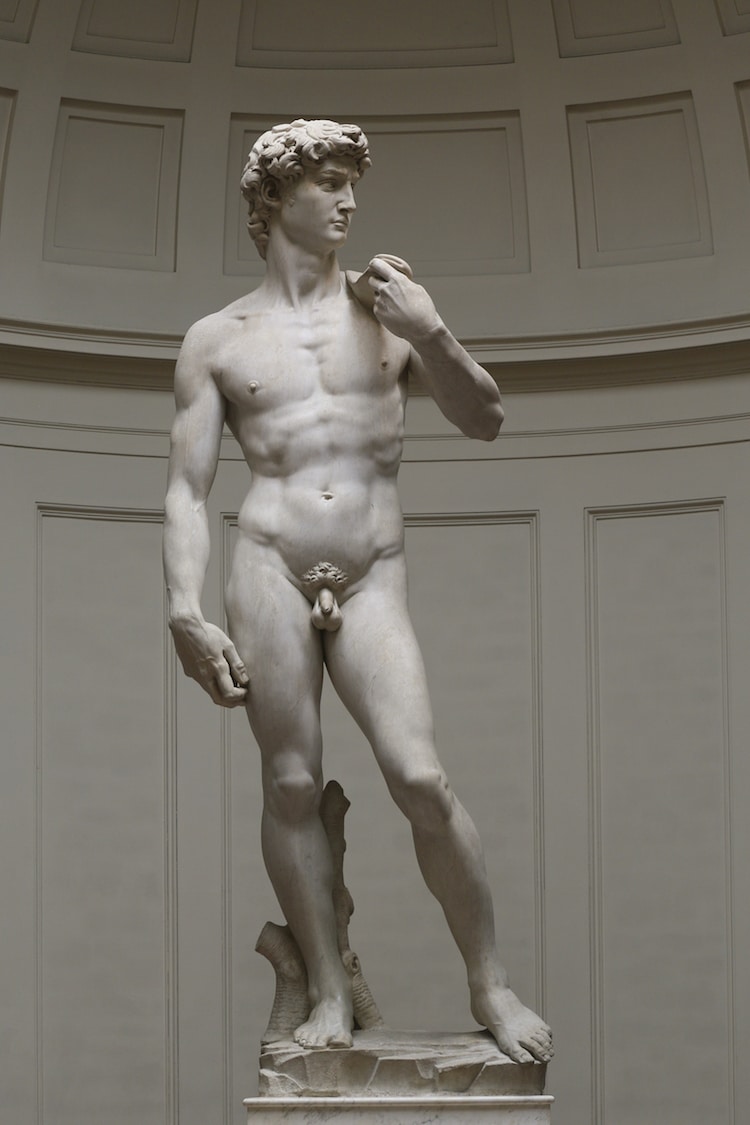
Michelangelo, "David," marble sculpture, c. 1501-4 (Photo: Jörg Bittner Unna via Wikimedia Commons [CC By 3.0])
Related Manufactures:
17th-Century Sculpture Captures Unbelievable Lace Details in Mitt-Carved Marble
Who Is Giotto? Learn About the Life and Art of the Male parent of the Renaissance
Who Is Titian? Exploring the Life and Art of the Renaissance Master of Color
Exploring Michelangelo'southward 'Pietà,' a Masterpiece of Renaissance Sculpture
Source: https://mymodernmet.com/donatello-david-bronze-sculpture/
0 Response to "Donatellos Statue of David Is Important in the History of Culture and the Arts Because"
Post a Comment